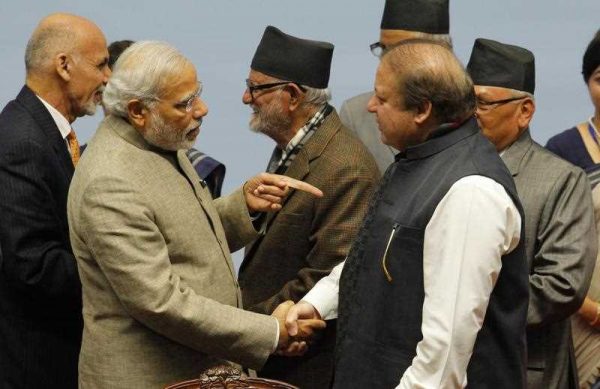Pakistan’s High Commissioner to India, Abdul Basit, has on several occasions conveyed Pakistan’s readiness to grant Non-Discriminatory Market Access (NDMA) to India once the dialogue resumes. With the National Security Advisors of the two countries slated to meet later this month, all eyes are now set on when an official meeting between the Indian and Pakistani commerce ministers will be fixed with a focus on fresh proposals to speed up the trade normalisation process.
The completion of this process will undoubtedly open new trade opportunities. For exports from India, there is tremendous scope in chemicals, textiles, machinery, mechanical appliances and electrical equipment. As for imports from Pakistan, trade possibilities exist in textiles, jewellery and precious metals, and base metals. The services sector, which has become increasingly important in both countries’ economies, provides fertile ground for trade, especially in sectors such as information technology and business process outsourcing, healthcare and entertainment sectors.
Trade normalisation would benefit producers and consumers in both the countries. Greater trade integration will give producers access to a much wider market and will allow them to achieve greater efficiency in production by exploiting economies of scale in production, thus enhancing productivity. The consumers in both countries would also benefit from lower product prices and better quality and more variety.
The most substantial impact of the trade normalisation process would be on informal trade flows, which are often considered a defining characteristic of the India–Pakistan economic relationship. Estimates of the extent of such trade range between US$250 million and US$5 billion. The primary reason for informal trade is the high transaction costs of trading, as a result of which traders often resort to trading through third-country ports, mainly Dubai.
Today, goods travel from Delhi to Lahore through Mumbai, Dubai and Karachi, making the journey 11 times longer and four times more costly. The move towards trade normalisation would certainly lead to a reduction in transaction costs and consequently shift informal trade flows to formal channels.
But for this potential to be realised, India and Pakistan need to prepare themselves to facilitate the expansion of bilateral trade. Poor land connectivity is a major problem. Currently there is only one land route — through Attari- and Wagah in Punjab — for rail and road transport of goods. To handle the increase in traffic and de-congest the route, more land routes need to be opened, such as the Munabhao–Khokhrapar and Hussainiwala–Ferozepur routes.
The transport protocols between the two countries also need to be amended to allow seamless transportation of cargo in each other’s territory. If the two countries agree to grant transit rights to each other, India could be connected to Afghanistan and further to Central Asia through Pakistan. Pakistan, meanwhile, will be able to access India’s eastern neighbours.
But an increase in trade will be difficult without requisite financial mechanisms. Even though the central banks of India and Pakistan signed an agreement that allowed for the opening of branches by two Indian banks in Pakistan and two Pakistani banks in India in 2005, this agreement has not still been implemented. Without banking services, the provision of letters of credit, and the facilitation of cross border transactions of funds, it will be hard for firms to trade across the India–Pakistan border even when NDMA is granted.
Limited people-to-people interactions because of barriers to communication have for several decades inhibited information flows that could help expand trade. Creating multilevel channels of communication is important for bringing businessmen of both countries together — which would help bridge information gaps, reduce misconceptions, and generate a significant change in the business environment of the two countries.
Finally, there is a need to engage with the media. In both India and Pakistan, the media has a powerful influence on public sentiments. Negative reporting has so far dominated the India–Pakistan relationship. It would be much more helpful for reporters to create a positive environment that is conducive to holding talks on trade normalisation between the two countries. The media should try to be optimistic about the benefits of trade normalisation and the possible impact that this could have on strengthening bilateral ties and regional integration.
Today, in a globally interdependent marketplace no two countries can afford to be isolated. Moreover, trade can serve as a powerful tool for conflict resolution between India and Pakistan. It is time that the two countries throw off the shackles of history and realise the benefits of economic partnership. Together India and Pakistan should take on joint responsibility for peaceful, prosperous and cooperative development in South Asia.
Nisha Taneja is a professor and Samridhi Bimal is a research associate at the Indian Council for Research on International Economic Relations.

